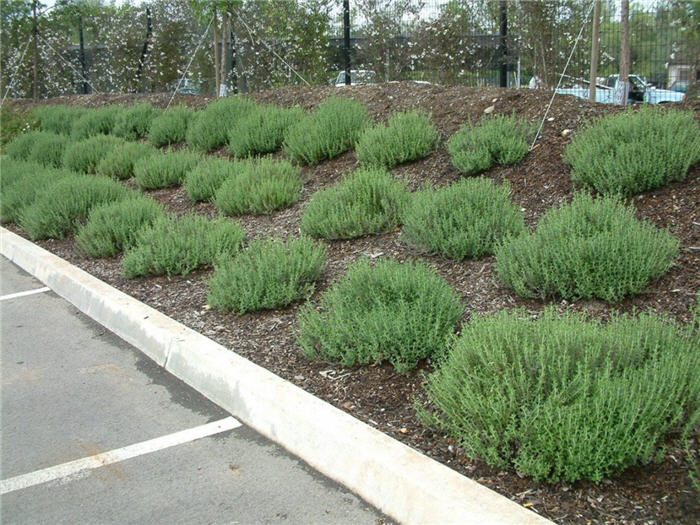| Botanical Name: Teucrium chamaedrys | |
| Common Name: Wall Germander |

-
Anatomy
-
Culture
-
Design
Plant Type
Shrub, Ground cover, Perennial, Herb
Height Range
1-3'
Flower Color
Pink, Purple
Flower Season
Spring, Summer
Leaf Color
Green, Dark Green
Bark Color
n/a
Fruit Color
n/a
Fruit Season
n/a
Sun
Full
Water
Very Low, Low
Growth Rate
Moderate
Soil Type
Sandy, Clay, Loam, Rocky, Unparticular
Soil Condition
Average, Rich, Poor, Well-drained, Dry
Soil pH
Neutral
Adverse Factors
n/a
Design Styles
English Cottage, Formal, Mediterranean, Ranch, Spanish
Accenting Features
Showy Flowers, Unusual Foliage
Seasonal Interest
Spring, Summer, Fall
Location Uses
Entry, Perennial Border, Shrub Border, Foundation, Parking Strip, Patio, Raised Planter, Walkways
Special Uses
Hedge, Mass Planting, Small Spaces
Attracts Wildlife
n/a
Information by: Stephanie Duer
Photographer: Susan Frommer/Engstrom
Photographer: Susan Frommer/Engstrom
-
Description
-
Notes
Wall germander is a shrubby, woody-based, clump-forming, broad leaf evergreen, grown for its attractive, aromatic, semi-evergreen foliage. Tiny, oval, scalloped, shiny dark green leaves densely cover numerous ascending and spreading stems which collectively form a mound of foliage about 12 to 15 inches tall and wide. Leaves resemble miniature oak leaves (chamaedrys means "ground oak" in reference to the leaf shape and ground cover habit). Whorls of two lipped, tubular, pink to purple (less frequently white) flowers (typical mint family) appear in terminal clusters in late spring to early summer. Use it to edge a sunny border, to line walks, or in a sunny place where you want something "boxwood-like." A very old plant, it has commonly been used in herb and knot gardens for hundreds of years.
Grow in dry to medium-dry, well drained soil in full sun. Tolerates poor soils, as long as the drainage is good (soggy or damp soils will cause the plant to rot at the crown). though listed as evergreen, it is not reliably so in our harsh winter climate. Though it has a pleasing, rounded form with no intervention, it will tolerate pruning and shearing. It makes quite a pleasing little hedge, in fact.